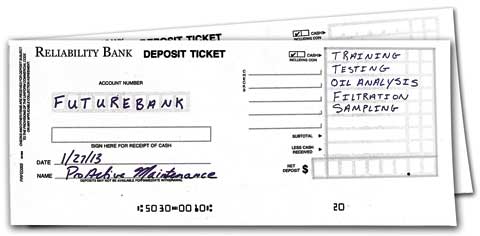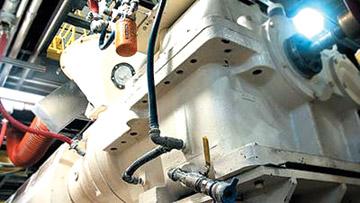Securing your Future with Proactive Maintenance
One of my earliest mentors taught me there are essentially two types of business activity: present bank and future bank. In other words, there is activity that generates revenue this month or quarter (present bank), and there is activity that will generate revenue several quarters or even years down the track (future bank). Usually, the two activities are mutually exclusive.
Consider a rancher who wants to grow his herd through natural increase. Every female calf he keeps to add to his breeding stock is a deposit in his future bank, but it comes at a cost to his present bank - it's a calf he cannot sell now. This means for the rancher, like most businesses, there's an ever-present temptation to borrow from the future bank to improve present bank results. Therein lies the dichotomy: you can't have it both ways.
Equipment operation is essentially a business activity, and the approach taken to its maintenance involves this present-bank/future-bank dichotomy. At a recent seminar I presented, a student described how very little predictive maintenance is done at the iron-ore mine where he works. Hydraulic components are changed out, and oil is dumped until problems go away. A hydraulic excavator worth $7 million digs $1 million of iron ore a day, so the largely unnecessary replacement of $90,000 worth of hydraulic components and $18,000 worth of hydraulic oil in a single day is tolerated and even encouraged to minimize downtime.
This production-at-any-cost mentality is present bank over future bank in the extreme. There's no doubt iron-ore miners are making hay at the moment, but theirs is a cyclical business. I remember the last mining recession very well. Miners were guarding every penny. When the current boom ends, these miners will have a real problem. They can't just flick a switch and go from production at any cost to a lean and mean operation. Their legacy systems and workforce culture won't allow it - not quickly anyway. They will pay a penalty for not making future-bank deposits to their maintenance systems, practices and people during the boom times.
The Value of Proactive Maintenance
The cost of proactive maintenance is much different than that of preventive, predictive and breakdown maintenance. This is because you don't actually have any kind of impending condition. Proactive maintenance is a vigilant activity of controlling things, as opposed to letting things fail on their own and then simply just changing out components or letting a breakdown occur.
| Maintenance Strategy | Technique Needed | Cost per HP per Year |
|---|---|---|
| Proactive Maintenance | Monitoring and correction of failure root causes, e.g., contamination | $0.10 |
| Predictive Maintenance | Monitoring of vibration, wear debris | $8 |
| Preventive Maintenance | Periodic component replacement | $13 |
| Brealdown Maintenance | Large maintenance budget | $18 |
This is not the only way present bank can be made to profit at the expense of future bank in a maintenance context. Another is borrowing from the future bank to reduce the initial capital outlay for an asset. This future-bank loan is subsequently repaid with interest as a result of less-than-optimum reliability over the useful life of the machine.
 In the case of a hydraulic machine, the achievement of optimal maintenance and reliability outcomes is all too often compromised at the outset through bad or cheap design. Oil quality, tank size, filtration, installed cooling capacity, conductor size, connector type and component efficiency are just a few of the corners that are all too easy to cut in a race to the bottom on price.
In the case of a hydraulic machine, the achievement of optimal maintenance and reliability outcomes is all too often compromised at the outset through bad or cheap design. Oil quality, tank size, filtration, installed cooling capacity, conductor size, connector type and component efficiency are just a few of the corners that are all too easy to cut in a race to the bottom on price.
Even a relatively well-designed (from a maintenance and reliability perspective) hydraulic machine will suffer from reliability issues if left to its own devices over time. This means optimal maintenance and reliability outcomes require a certain level of knowledge and intervention on the part of the end user. If these necessary maintenance interventions are deferred or omitted, the result once again is that present bank makes an increased profit at the expense of future bank.
 When proactive maintenance is performed correctly and effectively, every dollar spent on it should come back with friends attached. This makes the expense a future-bank deposit. However, the present-bank/future-bank dichotomy means both discipline and resolve are needed to resist the natural skew to present-bank economics and to keep making these future-bank deposits in good times and in bad.
When proactive maintenance is performed correctly and effectively, every dollar spent on it should come back with friends attached. This makes the expense a future-bank deposit. However, the present-bank/future-bank dichotomy means both discipline and resolve are needed to resist the natural skew to present-bank economics and to keep making these future-bank deposits in good times and in bad.
